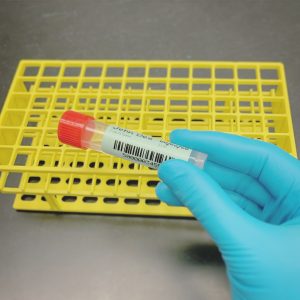 All healthcare industries strive for safety and quality control, especially when handling patient information. With the OralDNA® ordering process, some may wonder why it is so important to have two matching patient specific identifiers on the OralDNA® specimen and test requisition. In this week’s blog, we will share with you the importance of patient specific identifiers and how you can accurately identify your patients’ samples.
All healthcare industries strive for safety and quality control, especially when handling patient information. With the OralDNA® ordering process, some may wonder why it is so important to have two matching patient specific identifiers on the OralDNA® specimen and test requisition. In this week’s blog, we will share with you the importance of patient specific identifiers and how you can accurately identify your patients’ samples.
According to the College of American Pathologists (CAP) guideline COM.06100, patient samples require at least two patient-specific identifiers. Healthcare providers and staff should make it a priority to ensure the elimination of errors thereby maintaining high quality patient care.
Key identifiers include:
● Date of birth
● First and last name
● Medical Record Number
● Requisition number
● Accession number (from bar code label on collection vial)
When patient identifier discrepancies occur, such as different dates of birth, name misspellings, or abbreviations on the specimen vial as compared to the online order form, these can prompt delays in the processing of specimens, and possibly lead to a delay in lab results. If not caught early, final results may also be released with incorrect patient identifiers listed. Identifying a patient correctly and coordinating the patient’s information with the right lab request is an important factor in patient care.
Patients may ask why they are frequently required to confirm their identity. We can reassure them that it is done to help ensure correct quality care is given to the correct patient.
REFERENCES
1) Clinical and Laboratory Standards Institute. Specimen Labels: Content and Location, Fonts, and Label Orientation; Approved Standard. CLSI Document AUTO12-A. Clinical and Laboratory Standards Institute. Wayne, PA; 2011.
Pathologists, 2007.
For more information on how to become an OralDNA Provider – scan HERE: 
- The Necessity of Two Patient Specific Identifiers - February 23, 2024
- The Necessity of Two Patient Specific Identifiers - September 11, 2020
